Blog categories
Blog archive
RSS Blog posts tagged with 'inspiration'
Blog Filters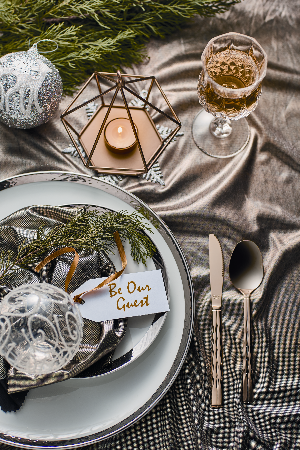
CH Christmas Special | Decor Ideas for a Stylish Christmas at Home
Friday, November 20, 2020
This Christmas, furnish your spaces with delectable festive decor that symbolises love and happiness. Here are a few ideas from Metrojaya’s Trim Shoppe and Living Quarters featuring a delightful collection of ornaments, heart-warming décor and exquisite gifts that add a special sparkle to the festive air.
Festive Style
From primitive rustic to charming vintage, from the whimsical to old world European-styled designs, there are many ways to decorate your home this Xmas. Whether you are looking for traditional ornaments, ribbons and garlands, Classic Santa and Angel figurines, or unique tree toppers and finials, these small details work wonders.
Tree Trimmings
Trim your Christmas tree with beautiful ornaments, garlands, and festive holiday lights. You can also opt for classic looks for your tree - for example pairing vibrant color schemes with various decorating techniques using ribbon, lights, and matching ornaments. Consider modern themes such as nautical Vintage Romance, Gatsby Glitz, Wintery Elegance, Splendor of Christmas, Deck the Shores, Whimsical Yuletide.
 Customers of Metrojaya can also opt to purchase already decorated trees at any Metrojaya stores. It’s a simple process: just simply take your pick, finalise your purchase and bring the tree home with all the ornaments of their choice. Metrojaya's customer service personnel is also available to offer advice on tree decorations. Metrojaya’s trees range from RM190 to RM550 depending on the height (6ft, 7ft and 8ft). Christmas trims range from RM9.90 to RM79.90.
Dazzling Table Settings
Make your holiday table sparkle with dazzling tableware and eye-catching centrepieces to complement your festive feast. The Xmas trend this year leans towards a vintage look accompanied by a touch of glitter. You can also use bold colours to enliven the table and set the mood for an enchanting evening.
Customers of Metrojaya can also opt to purchase already decorated trees at any Metrojaya stores. It’s a simple process: just simply take your pick, finalise your purchase and bring the tree home with all the ornaments of their choice. Metrojaya's customer service personnel is also available to offer advice on tree decorations. Metrojaya’s trees range from RM190 to RM550 depending on the height (6ft, 7ft and 8ft). Christmas trims range from RM9.90 to RM79.90.
Dazzling Table Settings
Make your holiday table sparkle with dazzling tableware and eye-catching centrepieces to complement your festive feast. The Xmas trend this year leans towards a vintage look accompanied by a touch of glitter. You can also use bold colours to enliven the table and set the mood for an enchanting evening.
 Christmas Cookspaces
Don't leave out your kitchen when you decorate for Christmas. Go for festive yet functional kitchenware that you can use all year long.
Christmas Cookspaces
Don't leave out your kitchen when you decorate for Christmas. Go for festive yet functional kitchenware that you can use all year long.

 Cozy Corners
Christmas is also a time for reflection and chilling out. Adorn your sofas or beds with plush and lush fabrics to introduce a cosy yet chic atmosphere to your quiet corners.
Cozy Corners
Christmas is also a time for reflection and chilling out. Adorn your sofas or beds with plush and lush fabrics to introduce a cosy yet chic atmosphere to your quiet corners.
 Check out Metrojaya's Christmas catalogue for more ideas | www.metrojaya.com.my
Styling and photography by Metrojaya
Check out Metrojaya's Christmas catalogue for more ideas | www.metrojaya.com.my
Styling and photography by Metrojaya

Outdoor Craft: 4 Ways to Make Outdoor Accessories from Recycled Items
Friday, November 20, 2020
With the ever-increasing sweltering heat serving as a reminder that accelerated climate change is a real thing, and in view of the prolific rate at which we throw things away, we thought it prudent to take stock of the things some creative homeowners have been doing with recycled materials to furnish outdoor spaces in vintage style without breaking the bank.
Planters A commonly seen use of recycled materials occurs in planter boxes. Rubber tires, glass bottles, tea tins, old furniture, discarded cookware, and even bathroom fixtures can be easily used to shore up the sides of planters, or to individually hold soil and plants within themselves.
 Without any modification, this clawfoot tub is simply transported outside to serve as a planter box. Image Source
Without any modification, this clawfoot tub is simply transported outside to serve as a planter box. Image Source
Lighting Discarded glassware is also ideal for use in homemade lighting fixtures thanks to their translucence. Glass containers keep candles that have been placed inside them lit, and can be used to keep exposed bulbs of lighting fixtures dry. Bottles with narrow necks can be repurposed as candle holders, while mason jars with wider mouths can be used to shield a flame from wind or to fully enclose a lightbulb.
 Jars can be used as candle holders to prevent the wind from blowing out the flames. Image Source
Jars can be used as candle holders to prevent the wind from blowing out the flames. Image Source
Furnishing Furnishing outdoor spaces does not necessarily entail significant expenditure, especially when one considers making their own furniture out of reclaimed wood. Old railway sleepers, warehouse pallets, or even those immense cable spools can be modified and cobbled together to make for some truly bespoke furnishings capable of enduring years of sun and rain. As an added bonus, screw on some caster wheels to make your furniture arrangements more versatile.
 This rustic outdoor seating is formed from stacks of pallets, with the advantage of mobility provided by the caster wheels. Image Source
This rustic outdoor seating is formed from stacks of pallets, with the advantage of mobility provided by the caster wheels. Image Source
Perhaps the most ubiquitous example of using recycled materials is the archetypal tire swing, prevalently used in rural settings since that bygone era when children had no choice other than to go outdoors for entertainment. The tire swing can be achieved by simply combining a discarded car tire with a length of rope thrown over a sturdy branch.
 The archetypal tire swing. Image Source
The archetypal tire swing. Image Source
Barbeque Pits Recycling metallic items is inherently problematic as most industrial applications require metals of the highest purities, but discarded metal objects often make for unique barbeque sets espcially when composed of stainless or carbon-coated steel. The homemade barbeque set is typically just an industrial-grade steel drum which has been cut open, but with a dose of creativity almost any metal object can be converted into a container for hot coals. Take the road less travelled by considering the use of an old car wheel as a fire pit by welding a perforated steel plate to the bottom and placing a grill over the top.
 Almost any metallic object can be converted into a homemade barbeque grill. Image Source
Almost any metallic object can be converted into a homemade barbeque grill. Image Source
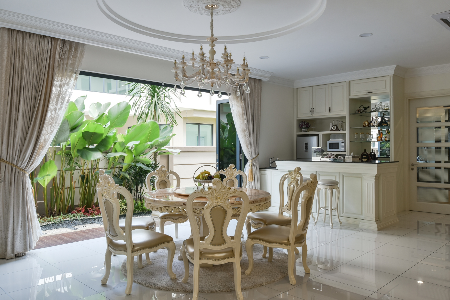
Dine in Style: A Dining Table Buying Guide for Every Homeowner
Friday, November 20, 2020
As the dining space is arguably the most likely part of a home where family members can be expected to congregate, the selection of a dining table is probably the most important decision to be made - at least with regards to furnishings. We understand that the wide range of styles and materials available for dining tables may be overwhelming for most, so we put together this definitive guide to assist you in your search for the perfect dining table.
Material
The materials commonly used in dining tables greatly affect their longevity in terms of substance as well as style. Hardwoods, metals, tempered glass, stone, and even mould-injected plastics tend to be the materials of choice for long-term furnishings expected to endure years of physical impacts and spills. On the end of the scale would be the lightweight or flat-pack designs composed of veneered wood composites such as plywood and fibreboard. These engineered composites are significantly less durable, showing a tendency to warp when subjected to excessive moisture or heat. On the plus side, tables made of these materials are preferred for short-term and low-frequency applications as they tend to be easier to repack and move by design.
Natural materials such as hardwoods and stone tend to be porous, requiring regular maintenance and a coat of varnish or sealer to prevent permanent staining from everyday use - however artisans attest to some aesthetic benefits derived from a deliberate patina providing a personalized tinge to these natural materials.
 Natural materials such as hardwoods and stone tend to be porous, requiring regular maintenance and a coat of varnish or sealer to prevent permanent staining from everyday use. From iN Design Bumper Issue 2016. Image Credit: Latitude Design
Natural materials such as hardwoods and stone tend to be porous, requiring regular maintenance and a coat of varnish or sealer to prevent permanent staining from everyday use. From iN Design Bumper Issue 2016. Image Credit: Latitude Design
Metals would also need to be protected, albeit to a lesser degree by virtue of their inherent durability. Metal furnishings are at the highest risk of deterioration by rust when used outdoors, and especially when lacking a protective coating. To ensure the longest possible lifespan, a metal dining table should be powder-coated in carbon to provide protection against scratches.
Dining tables sporting tempered glass tops are much sought after as they provide a balance between eye-pleasing aesthetics and durability in their reflective surfaces. While glass is naturally lower in impact resistance when compared to metal, modern tempered glass is manufactured at such high pressures that its durability is virtually guaranteed in everyday circumstances.
 Dining tables sporting tempered glass tops are much sought after as they provide a balance between eye-pleasing aesthetics and durability in their reflective surfaces. From iN Design Bumper Issue 2016. Image Credit: The Roof Studio
Dining tables sporting tempered glass tops are much sought after as they provide a balance between eye-pleasing aesthetics and durability in their reflective surfaces. From iN Design Bumper Issue 2016. Image Credit: The Roof Studio
Mould-injected plastics are likely the most economical and durable solution for outdoor applications but as white plastics tend to turn yellow with age, care should be taken to minimize their exposure to direct sunlight.
Size
One of the most crucial considerations for your dining table would be its dimensions, as a dining table that is too large for its space forces diners to squeeze through narrow gaps between the wall and their seats. We recommend allowing for gaps between 90 centimetres to 1.3 meters (or 36 to 50 inches) of space between a dining table and the surrounding walls to enable diners to comfortably take their seats.
 We recommend allowing for gaps between 90 centimetres to 1.3 meters (or 36 to 50 inches) of space between a dining table and the surrounding walls to enable diners to comfortably take their seats. From iN Design issue #66. Image Credit: Design Base Interior
We recommend allowing for gaps between 90 centimetres to 1.3 meters (or 36 to 50 inches) of space between a dining table and the surrounding walls to enable diners to comfortably take their seats. From iN Design issue #66. Image Credit: Design Base Interior
Diners should be provided with ample elbow room to allow for a relaxing dining experience. Our recommendations are to provide each diner with around 60 to 70 centimetres (or 24 to 28 inches) of space. With this rule in mind, one can accurately determine the appropriate size for a dining surface needed to serve a particular number of diners.
Shape
The shape of a dining table should also be considered, as rectangular tables tend to accommodate fewer diners than round tables of a similar size. To calculate the number of diners appropriate for a round table: multiply the diameter of a table by the value of Pi (π: 3.14) and divide the result by the amount of space needed for each diner.
 Assuming a minimum of 60 centimetres (or 24 inches) of space needed per diner, a round table with a diameter of 1.5 meters can easily accommodate 7 diners. From iN Design Bumper Issue 2016. Image Credit: Turn Design Interior
Assuming a minimum of 60 centimetres (or 24 inches) of space needed per diner, a round table with a diameter of 1.5 meters can easily accommodate 7 diners. From iN Design Bumper Issue 2016. Image Credit: Turn Design Interior
Assuming a minimum of 60 centimetres (or 24 inches) of space needed per diner, a round table with a diameter of 1.5 meters can easily accommodate 7 diners, or up to 8 diners with a negligible reduction in elbow room. A rectangular table that is 1.5 meters long can only seat a total of 6 diners - one at each end and two along each length.
 A rectangular table that is 1.5 meters long can only seat a total of 6 diners – one at each end and two along each length. From iN Design issue #71. Image Credit: Pocket Square
A rectangular table that is 1.5 meters long can only seat a total of 6 diners – one at each end and two along each length. From iN Design issue #71. Image Credit: Pocket Square
The choice of a dining table's shape has a noticeable effect on the space it occupies. Round tables, while capable of accommodating a greater number of diners, tend to appear imposing in tight quarters and are generally not suitable for small dining spaces as a result. Conversely, the more conventional rectangular dining tables take up the most space, requiring long and narrow spaces to avoid appearing out of proportion.
 Round tables, while capable of accommodating a greater number of diners, tend to appear imposing in tight quarters. From iN Design Bumper Issue 2015. Image Credit: D'concepto Design
Round tables, while capable of accommodating a greater number of diners, tend to appear imposing in tight quarters. From iN Design Bumper Issue 2015. Image Credit: D'concepto Design
 Rectangular dining tables take up the most space, requiring long and narrow spaces to avoid appearing out of proportion. From iN Design issue #78. Image Credit: Living Space Creative Design
Rectangular dining tables take up the most space, requiring long and narrow spaces to avoid appearing out of proportion. From iN Design issue #78. Image Credit: Living Space Creative Design
Height
Dining tables are commonly manufactured within a standard range of heights, from 710 to 760 centimetres (or between 28 to 30 inches), which makes finding them a relatively easy task. The key considerations to apply when looking at the various heights of dining tables is that the surface should be sufficiently low to provide an ergonomic resting place for arms, while the support structures beneath the surface should be sufficiently high to prevent knocking against knees.
To conserve floor space for smaller dining areas, open layout concepts, or simply for variation - consider counter-height tables, measuring up to 910 centimetres (or 36 inches) in height to join with kitchen counters, or bar-style tables around one meter in height.
 Consider counter-height tables, measuring up to 910 centimetres (or 36 inches) in height to join with kitchen counters. From iN Design magazine issue #74. Image Credit: Nu Infinity
Consider counter-height tables, measuring up to 910 centimetres (or 36 inches) in height to join with kitchen counters. From iN Design magazine issue #74. Image Credit: Nu Infinity
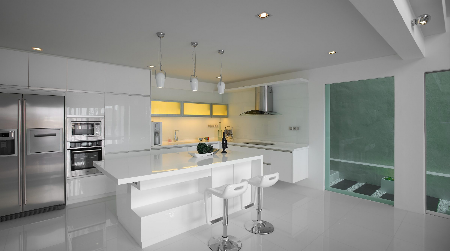
Island Inspirations: 6 Trendy Kitchen Island Ideas for Modern Homes
Friday, November 20, 2020
Any chef can attest to the indispensable utility provided by a kitchen island: it serves as a work-space, an intimate dining surface, and as a landing point for incoming groceries.
With the advent of small space living and open plan concepts, kitchen islands are less often confined within the walls of the cooking gallery - so to provide you with some inspiration and help you keep up with the Joneses, we sought out the most popular uses of kitchen islands that will likely redefine the norms we expect of future kitchens.
 Designer: Regal Violet
Designer: Regal Violet
6. The Beverage Bar By far the most common use of kitchen islands can be observed in the beverage corners of larger homes. As ready-made bar surfaces can be difficult to come by without the expertise of a carpenter, kitchen islands are often made to accommodate bar stools by narrowing the width and raising the height of the countertop beyond typical dining surfaces. The bar's design can be made to match adjacent counters and cabinets by modifying a kitchen island rather than searching for a purpose-built fixture.
 Designer: Metrics Global
Designer: Metrics Global
5. Decorative Features Expanding beyond the utilitarian role of a culinary work space, kitchen islands have often been spotted being used as central decorative features. These decorative islands enable a greater degree of freedom in their design, as they can be composed of stark rectangles to suit a contemporary aesthetic, or irregular angles for more eclectic tastes.
 Designer: Zids Design
Designer: Zids Design
The functionality of these decorative islands can be expanded when fitted with discrete shelving on the operative side, or with additional lighting hidden in recesses to bolster the ambiance.
 Designer: D'concepto Design
Designer: D'concepto Design
4. Dining Surfaces Some kitchen islands have been topped with wider surfaces, providing room for conventional dining with some chairs of appropriate height. These arrangements are best suited for smaller homes, where the incorporation of a dining area into the kitchen frees up additional space for other functions.
 Designer: Turn Design Interior
Designer: Turn Design Interior
3. Dining Extensions In spaces large enough to accommodate a dining table, kitchen islands have been seen being used to extend dining surfaces and to provide room for serving beverages or large dishes during gatherings. In addition to providing additional space for entertaining guests, these dining table extensions act as a form of physical separation that help to define the border between dining area and dry kitchen.
 Designer: Nu Infinity
Designer: Nu Infinity
2. Teppanyaki Dining Taking the role of dining surface a step further, we have seen kitchen islands accommodating Teppanyaki-styled arrangements in larger kitchens. These kitchen islands incorporate a grill or stove-top in the centre of the island, and with the accompaniment of bar stools or dining chairs to match the height of the counter, a meal can be served under the direct supervision of the chef.
 Designer: Living Space Creative Design
Designer: Living Space Creative Design
1. Retractable Utility In some small kitchens, kitchen islands have been reduced to their simplest forms and made retractable to provide the option of additional work space with the benefit of a stowable design. With the inclusion of a few stackable stools or dining chairs, the retractable work surface can be turned into an intimate breakfast nook without permanently sacrificing floor space.
 Designer: Zids Design
Have you come across any honourable mentions for this list? Let us know on our Facebook page.
Designer: Zids Design
Have you come across any honourable mentions for this list? Let us know on our Facebook page.
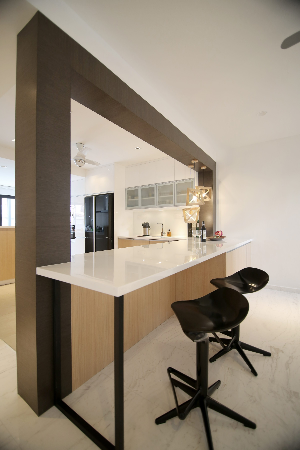
7 Modern Breakfast Counter Ideas
Friday, November 20, 2020
An island counter often ends up seeing more use than a dining room, with the casual setting and proximity to the kitchen - and in urban homes, island counters are usually the de facto dining space. Since you would be having most of your meals there, we thought it prudent to assemble the most inspiring island counters we have seen recently to give you some ideas.
1. Minimalist Monolith Interior design by: Nu Infinity
Interior design by: Nu Infinity
To frame the projecting dining surface, a faux archway is integrated over this island counter and laminated in a dull shade of greyish brown to complement the neutral palette of the décor. Besides being a purely aesthetic feature, this framing structure provides a point from which other decorative features such as pendant lights can be hung to personalise and illuminate the space.
2. Country Kitchen
 Interior design by: Yong Studio
Interior design by: Yong Studio
With an abundance of space to spare, this centrally positioned island counter is given a countryside treatment - with its sides panelled in vertical wood planks and whitewashed to mirror the decorative faces of the cabinetry and the backsplash of glossy white tiles. The panelling on the sides of the island counter is echoed in dark brown with the addition of a pair of matching bar stools, while lighting is provided by a pair of simplistic shaded lamps in white to adhere to the prevailing palette.
3. Drop-Down Dining
 Interior design by: Design Spirits
Interior design by: Design Spirits
So as not to interrupt the visual expansion of the kitchen by way of the reflective wall, this island counter is supported by a converging pair of steel box pipe legs and kept slim with a simplistic panel of wood laminated in matte white to match the surrounding cabinetry. The implied mobility of this design reduces the visual weight of the island counter, rendering it as a diminutive and centrally located fixture in this compact kitchen.
4. Natural Flavour
 Interior design by: Homlux Interior Furnishing
Interior design by: Homlux Interior Furnishing
The conventional design of this island counter is given a twist to fall in line with the use of natural materials in this conjoined dining and kitchen space. While the island counter’s functional surface is formed out of engineered stone in plain white to contrast against the natural shades and lines in the surrounding surfaces, the decorative face is rendered in bare cement to catch the array of shadows thrown by the legs of the accompanying stools.
5. Transported Shades
 Interior design by: SQFT Space Design Management
Interior design by: SQFT Space Design Management
Even with an island counter of conventional design, it is possible to apply the simple repetition of colour to achieve a cohesive décor imbued with meaning. The decorative face of this island counter repeats the pale green of the backsplash, producing a swathe of greenery that appears as foliage when viewed in combination with the minimalistic bar stools in dark wood. The message is punctuated with an assortment of floral decorations situated at the base of the island counter's projection.
6. Levitating Surface
 Interior design by: Casa Indah Design
The centrally located island counter appears to float in a sea of reflective surfaces - a slab of engineered stone in white projects from the end of a false wall, with a sleek triangular foot covered in mirrored panes acting as support. The opaque and black accompanying stools serve as the visual foot of the island counter in bold contrast with the reflective surroundings and the white countertop.
Interior design by: Casa Indah Design
The centrally located island counter appears to float in a sea of reflective surfaces - a slab of engineered stone in white projects from the end of a false wall, with a sleek triangular foot covered in mirrored panes acting as support. The opaque and black accompanying stools serve as the visual foot of the island counter in bold contrast with the reflective surroundings and the white countertop.
7. Lightweight Design
 Interior design by: Yong Studio
Interior design by: Yong Studio
The minimalist nature of this island counter can be spotted in the use of a single narrow length of wood plank to serve as the functional surface and black pipes in the wine rack and stool legs. The location of this island counter - in what was apparently once a doorway, adds to its minimalist personality.
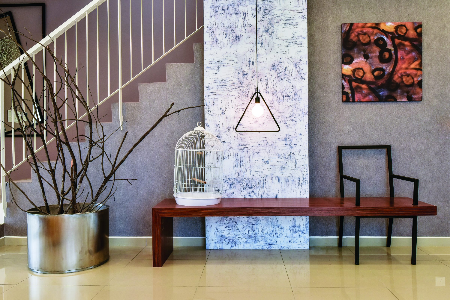
5 Ways to Make Your Living Room Stand Out with Unique Decorating Features
Friday, November 20, 2020
Besides being places of temporary respite, the average living room offers the kind of space that would be suited for small art installations rivalling high street galleries. Here are five ways to take advantage of any extra space in your seating lounge, to turn them into exhibits of artistic expression.
 Interior design by: Casa Indah Design
1. Arte Ensemble
Interior design by: Casa Indah Design
1. Arte Ensemble
Combine a collection of both common objects and unrelated rarities for an artful and dramatic arrangement that straddles surrealist and dadaist expression. In the decorative corner of this living room decorated by Casa Indah Design, a briskly-whitewashed panel acts as a country-inspired backdrop for a collection of seemingly unrelated objects presented on a piece of furnishing in the midst of an existential dilemma.
 Interior design by: Casa Indah Design
2. Style Fusion
Interior design by: Casa Indah Design
2. Style Fusion
It takes a certain boldness to combine unrelated themes into a cohesive interior, as was done in this living room - with furnishings of modern and minimalist designs located in close proximity to decorations reminiscent of the countryside. A dispersed sprinkling of country-inspired decorations, in the hide rug as well as both hard and soft representations of wood, help to tie together the two ordinarily contrasting themes.
 Interior design by: The Roof Studio
3. Overt Focus
Interior design by: The Roof Studio
3. Overt Focus
The modern convention presented in this living room is given an artful twist with the inclusion of a single armchair nestled into the inside of a mask. The stoic human face, formed out of the armchair's high back, surprises the naive eye and adds a dose of eccentricity to a relatively reserved interior appointed with modern and minimalist furnishings.
 Interior design by: Homlux Interior Furnishing
4. Discrete Organics
Interior design by: Homlux Interior Furnishing
4. Discrete Organics
The unified colour palette and fine lines of this elegant interior are complemented by natural forms presented in tight clutches of flora and a solitary statuette depicting a wild cat. The sandstone shade of these architectural finishes and furnishings contribute towards a tone reminiscent of the desert, creating potential for an oasis to be painted - as demonstrated by the tiny potted plants contained within glass bell covers on the paradoxically luxurious and minimalist coffee table.
 Interior design by: Jashen Interior Design
5. Vintage Homage
Interior design by: Jashen Interior Design
5. Vintage Homage
Expressions of style in architectural finishes can only say so much, rather than stopping with planes of homogenous finishes in brick and wood, this home office embraces vibes of the past by presenting a collection of plaques in vintage designs over the walls and cabinet doors.
Click here for more living rooms.
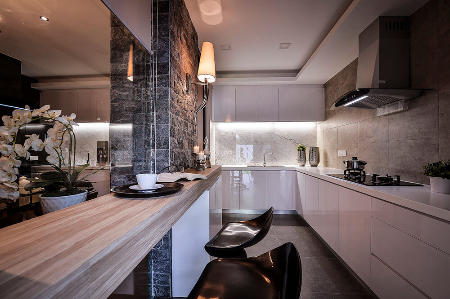
Taste and Textures: What Your Kitchen Worktop Says About Your Personality
Friday, November 20, 2020
Your kitchen worktop is the single most important decision you can make when installing a new kitchen. So choosing the right worktop surface is one of the most crucial decisions you'll make. Your kitchen worktop choice can say a lot about your taste in design, your lifestyle and even how seriously you take your cooking. So, which one are you?
1. WoodYou are: warm, tactile, earthy and very antibacterial. You're easily shaped and can adapt to accommodate even the trickiest environment. However you are prone to scratching and can dent easily but, if looked after properly, you will last a very long time and, like a vintage wine, will just get better with age. You require oiling every six months or so, which some say is high-maintenance, but this will only serve to bring out all your natural character.
 Designer: The Roof Studio
2. Marble
Designer: The Roof Studio
2. Marble
You are: cool, calm and very collected. Classically beautiful, you automatically catch the eye, adding understated glamour to any scheme. Like all great divas, you are quite high maintenance, needing a lot of care and attention to stay in tip-top condition. You scratch easily. A little porous, you soak up the red wine a little too easily, which can leave you looking tired, damaged and out of condition. While certainly not cheap, you can still punch above your weight when used in small doses, lifting a scheme as a stand-out feature on an island, say.
 Designer: FIX Design Solution
3. Concrete
Designer: FIX Design Solution
3. Concrete
You are: tough. But adaptable. You can, quite literally, be poured into any templated shape. You are more than a little bit ‘urban street' but beneath your hard, no-nonsense exterior lurks an honest charm borne out of your ability to withstand whatever life throws at you. You wear your knocks well, and can be easily repaired but may need treating with a sealant to protect you from nasty stains.
4. Stainless steelYou are: a true professional. Handy with a cleaver, you have no time to dilly dally searching round for a chopping board to protect your delicate surface. No matter. The scratches, dents and knocks you take on simply add to your patina of charm. Tough, hygienic, hard wearing and hard working, have you thought of applying for Masterchef?
 Designer: Luna Solutions
5. Granite
Designer: Luna Solutions
5. Granite
You: think you're hard enough? Resistant to all scratches, you rival old softie marble for classic beauty and are at your most stunning in polished black (the ebony to the ivory of white units). Although hard enough to even take direct chopping without so much as leaving a mark, you do have a weakness for lemon juice which can ruin your perfect surface. In fact all kinds of citrus are like kryptonite to you, so your owners can become a little obsessive about keeping you constantly buffed.
 Designer: Q1 Interior Concept
6. Laminate
You are: versatile, adaptable, affordable and, unless you were born in the 80s, full of surprises. You are now available in a huge array of colours and sophisticated surface finishes. Thanks to the latest printing technology, you are a great mimic who can take on the look of real stone, marble or a host of other natural matrials. You come into your own when accessorised – something as simple as a stainless steel trim or wood veneer edging can really add character and lift you from the mundane to the marvellous.
Designer: Q1 Interior Concept
6. Laminate
You are: versatile, adaptable, affordable and, unless you were born in the 80s, full of surprises. You are now available in a huge array of colours and sophisticated surface finishes. Thanks to the latest printing technology, you are a great mimic who can take on the look of real stone, marble or a host of other natural matrials. You come into your own when accessorised – something as simple as a stainless steel trim or wood veneer edging can really add character and lift you from the mundane to the marvellous.
 Designer: Global Elite Ventures
7. Man-made composite
Designer: Global Elite Ventures
7. Man-made composite
You are: sleek, modern, solid and always up to the beat. You have a modern, edgy name like Corian, Silestone or Zodiac, being one of the cool gang who are easily fabricated into one seamless whole. You may well come in a punchy bright or sugary pastel colour, but chances are you're effortlessly beautiful in a flat finish cream, putty, pure white or café latte shade. You are hygienic, easy to clean and recover well from set-backs with scratches and stains being easily polished out. Installation isn't easy, so you need careful handling, by a professional who knows what they're doing but that's because, hey, you're worth it...
 Designer: Zanotta Design & Renovation
Designer: Zanotta Design & Renovation
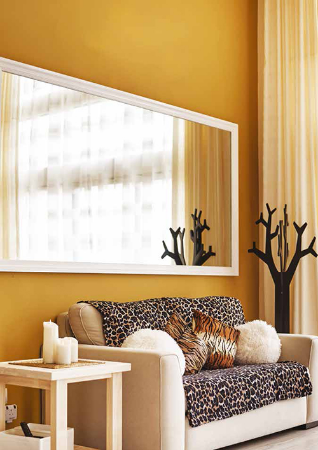
Gold Rush: Swaths of Energising Gold Enliven This Exquisite Home
Friday, November 20, 2020
A new home, for a new family – the stunning duplex apartment located in Sunway Damansara is home to the, stillfairly- newlyweds, actor Fahrin Ahmad, 37 and Elena Eleas, 38. With smiles all around and colours that really enhance the voluminous apartment, the happy couples’ aura reflects the cheerful décor, as we talk about their new home over some brunch.

Thanks to Dulux Paints, Fahrin and Elena now have a space that they love and can settle into, building their family. Deciding together to undergo major renovations, they transformed the space together creating the home of their dreams.
Beginning their renovations with the colours, Fahrin and Elena collaborated with Dulux, using Dulux’s colour palette from ‘Colour of the Year 2016. Creating an exciting interior, Fahrin boasted about just how much the colour transformed the space, saying, “compared to what it was previously, we now have lighter and brighter colours which make it look so refreshed. Spaces feel larger and more energised, and visually, it’s just more dynamic. It’s amazing what the right colours can do to a space.”
To invigorate and energise the living spaces, Dulux Ambiance Linen Warm Gold 35YY 59/533 and Dulux Ambiance Pearl Glo 35YY 59/533 were used on the doubleheight wall in the living area. The paint effects of the Linen is inspired by natural and rustic linen, making this wall stand out with a unique textured fabric effect. With natural light streaming in through the large windows reflecting off the paint, the living space radiates with beauty and luminosity.
In their spacious master bedroom, Dulux’s Colour of the Year 2016 - Monarch Gold 20YY 36/370 and Honey Moon 52YY 89/117 are used creating an elegant yet tranquil space. Being Elena’s favourite colour, she found furnishing her home around the colour easy, integrating neutral tones to contrast against the gold as well enhancing it at the same time. Both Fahrin and Elena are over moon with Dulux’s Colour of The Year 2016 palette, as it suits their style perfectly.
So, now that they’ve renovated their home together, what would be their best piece of advice for homeowners looking to do a bit of renovation?
“Based on our experience, when choosing colours and paint, you need to follow the experts’ advice. Listen to what they have to say because they are after all professionals and they know about these things. The best thing about Dulux is that they offer free colour consultation services. They will help you choose the right colour scheme and colours especially for your space. Always refer to colour palettes too – Dulux has an app which allows you to browse through their catalogue of colours, so that helps when deciding on a colour."

With a beautiful new home for the amiable couple, Fahrin shared some last words: “We would like to thank you Dulux for helping us create our home! Thanks for always entertaining our requests."
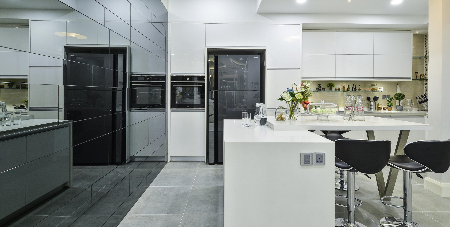
Sleek and Shiny: Pros and Cons of Using Reflective Kitchen Cabinets
Friday, November 20, 2020
Glossy cabinets in the kitchen are highly sought after, perhaps for the same reasons as lustrous minerals and polished baubles have been considered prized treasures since antiquity - a reflective surface imitates the world more accurately than any representational art form, while being nothing more than an otherwise meaningless object that has been polished smooth with effort, or a combination of time, pressure, and heat. If you happened across our analysis of materials commonly used in kitchen cabinets or countertops, and you have your heart set on updating your cooking space with glistening surfaces, you may be interested in taking a closer look at the advantages (and disadvantages) of reflective cabinets in the modern kitchen.
Smooth Surfaces
 Interior design by: Design Spirits
Interior design by: Design Spirits
While mirrored planes can be counted on to visually expand a space, most reflective surfaces are manufactured with a degree of smoothness that is measured in microns. This level of precision commonly entails an absence of texture in most materials, which can render a kitchen cold and aloof if large or seamless panes are applied without any discernible spacing to provide some semblance of texture. By applying reflective planes in a haphazard, brick-like configuration, the interior designer - Design Spirits provides this kitchen with both a visual expansion and a chaotic aesthetic element to contrast against the ordered lines of modern design.
Concealing Shade
 Interior design by: Hue Art Design
Interior design by: Hue Art Design
In addition to bearing little to no discernable texture, glossy cabinets will present greasy fingerprints more discernibly - in part, due to a characteristic imparting smooth planes with a “stickiness” (van der Waals forces), which attracts even the most microscopic of airborne particles and prominently displays light-disrupting dirt against a reflective surface. A slightly darker tint - as applied by Hue Art Design to the cabinets in this kitchen - will lessen the visual impact of dirt. Cleaning should be done periodically with a micro-fibre washcloth, to prevent scratches that could potentially add to the diffusion of light and result in slightly blurred reflections.
Intriguing Angles
Because mirrored surfaces reflect rather than absorb light, polished planes can be used to visually expand a space and provide unique perspectives that would not ordinarily be possible with matte surfaces. Designed by Zanotta, this kitchen utilises reflections to widen the scene and mystify the eye. Although partially obscured behind a projecting island, the polished doors on the lower cabinets present the entirety of the floor space to observers entering the kitchen - while the upper cabinets magnify the sunlight and warm yellow glows from the lighting fixtures.
Modern Circumstances
 Interior design by: Homlux Interior Furnishing
Interior design by: Homlux Interior Furnishing
The combination of space-expanding visual effects and typically narrow profiles make reflective planes one of the most indispensable ingredients of the modern urban home. Without the darkly-tinted reflected surfaces providing both visual expansion and contrast in this kitchen designed by Homlux Interior Furnishing, the narrow space may have otherwise appeared unbalanced with the abundance of stone, the extra height provided by the air-well, and the intense glow of the sun streaming in through the skylight.
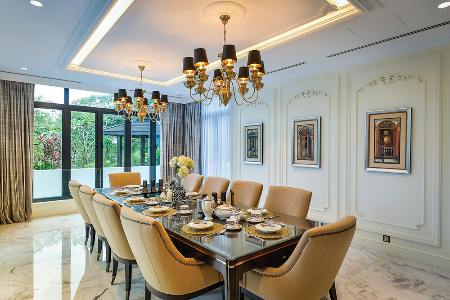
Trendy Touches: Top 2018 Interior Design Trends to Boost Your Home's Appeal
Friday, November 20, 2020
Here are the decorative styles and features you can expect in the coming year.
At the start of every year, we take a look back across the entire breadth of imagery we have collected over the last 12 months, to find the decorative features with the staying power to make it into the next year and onward. After considerable analysis and critiquing, we believe we have arrived at a guide for what to expect in 2018 - at least in the realm of interior design.
1 Classical Features We expect to see a continuation of classical features such as shaded chandeliers and plaster wall moulding adorning luxurious spaces in the coming year. While the world's burgeoning economies have been experimenting with regionally-relevant styles, neoclassicism of European influence has proven to be a dependable approach to fall back on - especially when overt opulence is the intended image.
 A number of discrete details have been incorporated into this dining space in order to bring the classic style to modern times: reflective trim around the dining table, metallic picture frames, and recessed area lighting hidden in the crevices of the ceiling. Designer: IDS Interior Design
A number of discrete details have been incorporated into this dining space in order to bring the classic style to modern times: reflective trim around the dining table, metallic picture frames, and recessed area lighting hidden in the crevices of the ceiling. Designer: IDS Interior Design
2 Dark Wood With natural materials such as wood and stone seeing greater use in our homes this past year, we expect to see a continuation of wooden decorative features and furnishings in dark shades to appeal to modern sensibilities - especially when paired with an immaculate expanse of white.
 This bar exudes luxury with dark wood laminate, white stone, and golden reflective accents serving as trim on the cabinetry. Designer: Metrics Global
This bar exudes luxury with dark wood laminate, white stone, and golden reflective accents serving as trim on the cabinetry. Designer: Metrics Global
3 Indoor Greenery Keeping in tune with our collective ambitions for ecological stability, another decorative feature gaining in rapid popularity is the humble indoor plant. Although previously spotted in vases or pots, really turning that dial labelled "Plants" all the way up and letting nature into your home does more than add some colour to the interior - you get higher quality air too.
 While the wall creepers in this case may not be living - on account of the wood floor presenting a practical problem in plant care, the mimicry serves to amplify the few green accents in this space. Designer: Nu Infinity
While the wall creepers in this case may not be living - on account of the wood floor presenting a practical problem in plant care, the mimicry serves to amplify the few green accents in this space. Designer: Nu Infinity
4 Industrial Influence With the large swathes of formerly industrial properties being converted into homes and centres of commerce around the world, we foresee a resurgence of post-industrial style represented by bare concrete and re-purposed wood or metal. Even in modern structures, we believe that materials that would have previously gone to waste are increasingly being given new life as decorative and functional features.
 Bare ceilings and a majority of concrete surfaces create a hard, sombre look that is cool yet fashionable. Designer: X-Two Concept
Bare ceilings and a majority of concrete surfaces create a hard, sombre look that is cool yet fashionable. Designer: X-Two Concept
5 Metallic Accents With the global consciousness finally sliding into a restorative mode at the tail end of 2017, we foresee a declining dependence on heavily processed materials such as gilded metals. Despite that potentially inflammatory forecast, metallic components will continue to surpass other materials such as wood in terms of the physical and aesthetic properties (such as damage resistance and translucence) that make them indispensable in particular furnishings and fixtures.
 Metal is used to keep the profiles of furnishings and light fixtures minimal, providing the interior with a greater sense of space. Designer: Humbert & Poyet
Metal is used to keep the profiles of furnishings and light fixtures minimal, providing the interior with a greater sense of space. Designer: Humbert & Poyet
Wondering what colours to expect in the coming year? Get it direct from some of the people who make your paint.







